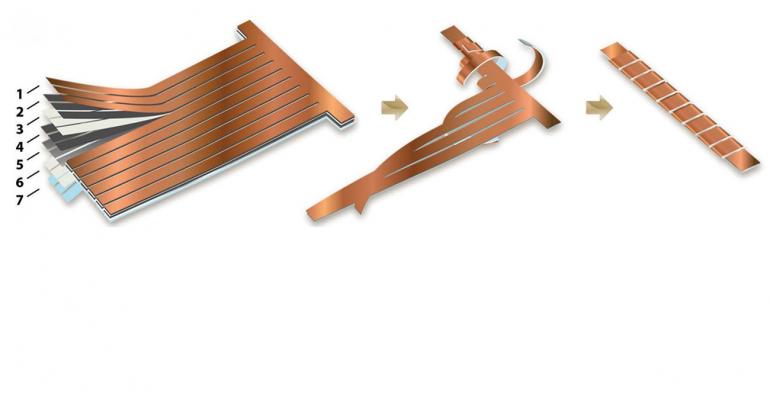The Vertebrate Battery “Prof. Yuan Yang of the engineering school at Columbia University (New York) modeled, designed, built, and fully evaluated a configuration that emulates the spine of vertebrates, while providing 85% of the energy density of a prismatic Li-ion cell with equivalent volume.” According to Power Electronics.com. Professor Yang’s 14-member team, working in the impressively-named Center for Precision Assembly of Superstratic and Superatomic Solids, and inspired by the flexibility of the human spine and its ability to repeatedly endure bending and twisting, designed a battery that emulates the characteristics of what is in essence a structural battery. We know from experience that our backbones can perform some pretty extraordinary twists and turns – witness the supple routines of gymnasts and Cirque de Soleil performers. Our spines are not rigid assemblies, but a complex construction of solid parts (vertebrae), flexible bits between the vertebrae (disks), and a network of wiring (nerves), which transmit signals from our organs and extremities to …
A Dendrite Eraser?
The Pacific Northwest National Laboratory in Richland, Washington, seems to have an industrious group of researchers who come up with ever-improved forms of batteries. One of their creations, a hybrid graphite/lithium anode, was featured in this blog last year. Now, Frances White reports from the PNNL that one of the researchers involved with that work has led another team to an innovative approach to a new electrolyte for lithium batteries. According to Ms. White, “PNNL physicist Jason Zhang (Ji-Guang “Jason” Zhang) and his colleagues have developed a new electrolyte that allows lithium-sulfur, lithium-metal and lithium-air batteries to operate at 99 percent efficiency, while having a high current density and without growing dendrites that short-circuit rechargeable batteries.” This is a real breakthrough because, for lithium batteries overall, the chemistries that give higher performance are generally more volatile. This new material avoids those issues and gives top performance with great safety. Earlier electrolytes reacted with the lithium electrode to grow little spikes that …

